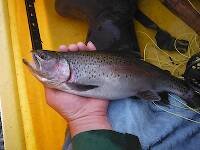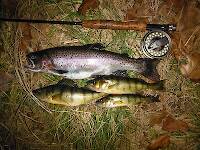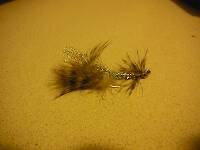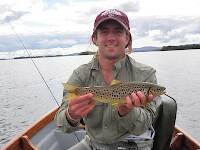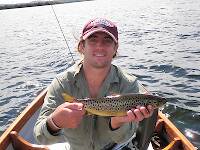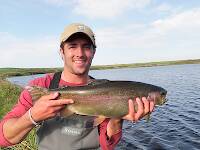
Hex Mayflies
Hexagenia limbata
The famous nocturnal Hex hatch of the Midwest (and a few other lucky locations) stirs to the surface mythically large brown trout that only touch streamers for the rest of the year.
Featured on the forum

I was not fishing, but happened to be at an unrelated social event on a hill above this tiny creek (which I never even saw) when this stonefly flew by me. I assume it came from there. Some key characteristics are tricky to follow, but process of elimination ultimately led me to Sweltsa borealis. It is reassuringly similar to this specimen posted by Bob Newell years ago. It is also so strikingly similar to this nymph from the same river system that I'm comfortable identifying that nymph from this adult. I was especially pleased with the closeup photo of four mites parasitizing this one.

Troutnut is a project started in 2003 by salmonid ecologist Jason "Troutnut" Neuswanger to help anglers and
fly tyers unabashedly embrace the entomological side of the sport. Learn more about Troutnut or
support the project for an enhanced experience here.

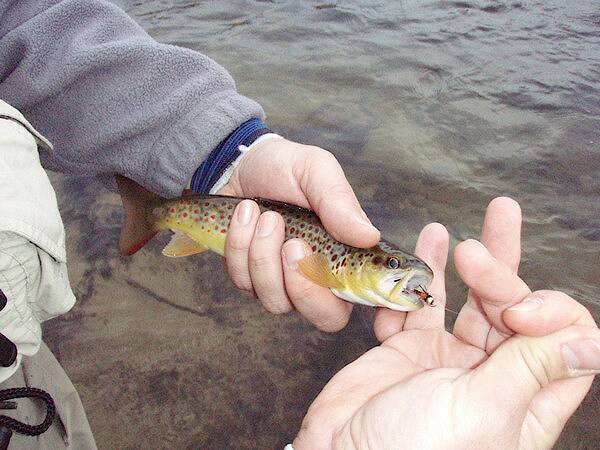
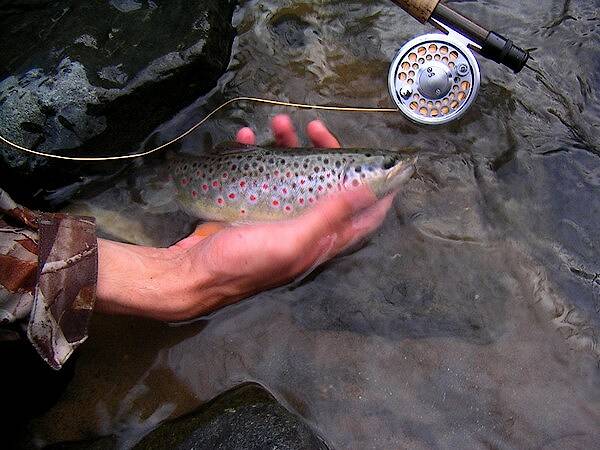
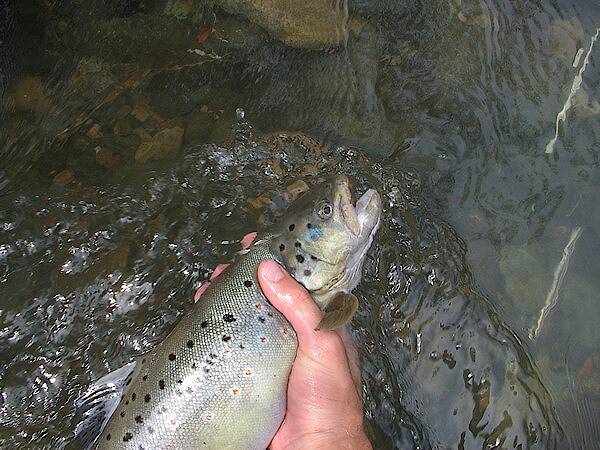
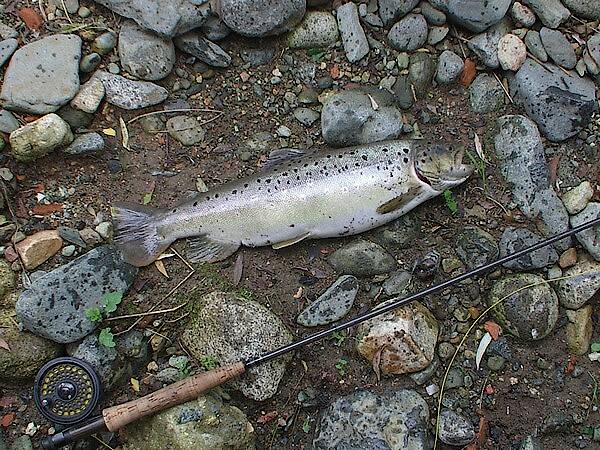
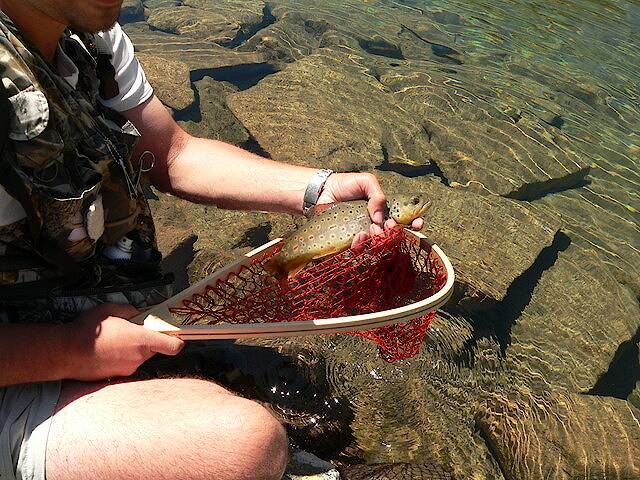
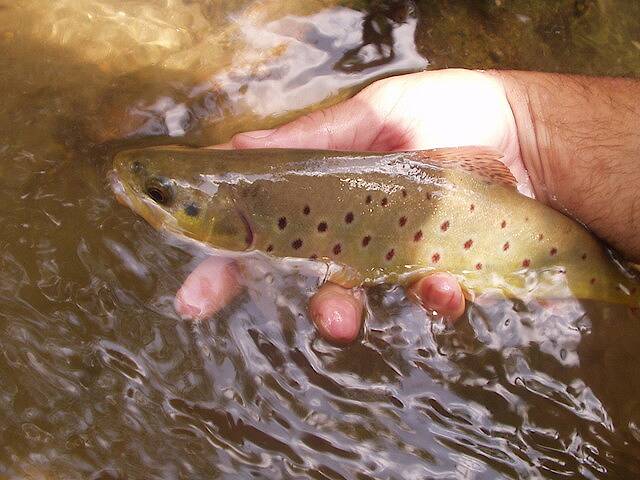
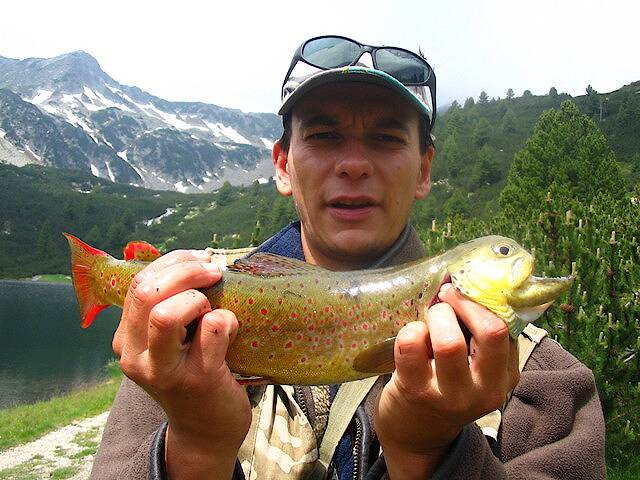
Stanislav on Feb 20, 2007February 20th, 2007, 6:36 am EST
Martinlfq asked me to show some brown trouts from my country so here they are if you want more just tell!
Best wishes!
Best wishes!
The life is too short to fish a bad fly
GONZO on Feb 20, 2007February 20th, 2007, 6:48 am EST
Fascinating, Stanislav. These seem to show the characteristics of the European stream trout (or Fario). Are the fish you pursue mostly wild or from stocking? Are any of these from lakes?
Stanislav on Feb 20, 2007February 20th, 2007, 7:20 am EST
They are all wild. No one from lake . Look the new three pics especially the third one this fish dosn`t have a mout. All tree are from our high mountain lakes!
The life is too short to fish a bad fly
GONZO on Feb 20, 2007February 20th, 2007, 7:31 am EST
Very cool! I notice especially the red spots on the dorsal fin of the fish with the strange mouth. I've seen these spots on a few populations of wild browns here in PA and suspected that it might be more common in native European strains. Thank you very much.
PS--Do scuds, freshwater shrimp, crayfish, or perhaps snails comprise a significant portion of the diet in the lake where that last fish was caught?
PS--Do scuds, freshwater shrimp, crayfish, or perhaps snails comprise a significant portion of the diet in the lake where that last fish was caught?
Martinlf on Feb 20, 2007February 20th, 2007, 1:24 pm EST
Wow! Gorgeous photos. If only I had the time and money--Bulgaria would be my next fishing destination. Thanks, Stan.
"He spread them a yard and a half. 'And every one that got away is this big.'"
--Fred Chappell
--Fred Chappell
Stanislav on Feb 21, 2007February 21st, 2007, 3:21 am EST
For the snails and scuds I` m sure... and will add some mosquito larvaes.
The life is too short to fish a bad fly
Troutnut on Feb 22, 2007February 22nd, 2007, 8:39 am EST
That bottom one is really something! I wonder if the weird shape is due to an early injury or a developmental problem.
Jason Neuswanger, Ph.D.
Troutnut and salmonid ecologist
Troutnut and salmonid ecologist
GONZO on Feb 22, 2007February 22nd, 2007, 8:45 am EST
I've seen hatchery fish with a similar deformity, but I don't know the cause. (Perhaps David has some thoughts about this.) The red on this fish is so intense that it reminds me of descriptions of the Irish "Gillaroo," which is reported to be a snail eater.
GONZO on Feb 22, 2007February 22nd, 2007, 3:57 pm EST
Oh c'mon, David! That was funny, and Hollywood (like lawyers) is fair game. And I had read that whirling disease could cause cranial deformities. Whatever the cause, it's kind of sad, really--it is a truly striking and beautiful fish otherwise.
Quick Reply
Related Discussions
Topic
Replies
Last Reply
1
Nov 9, 2006
by Troutnut
by Troutnut
1
Nov 3, 2015
by TimCat
by TimCat
9
Nov 3, 2015
by Oldredbarn
by Oldredbarn




